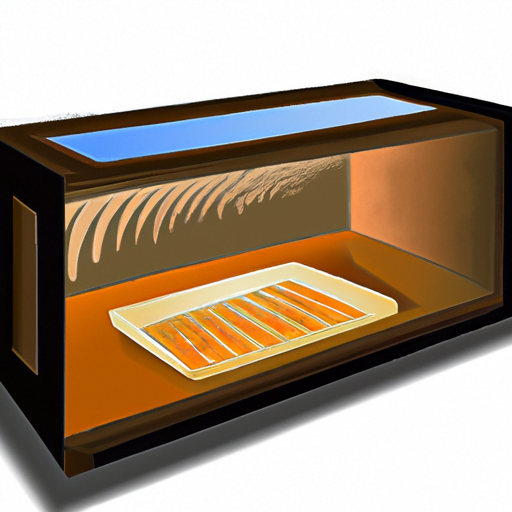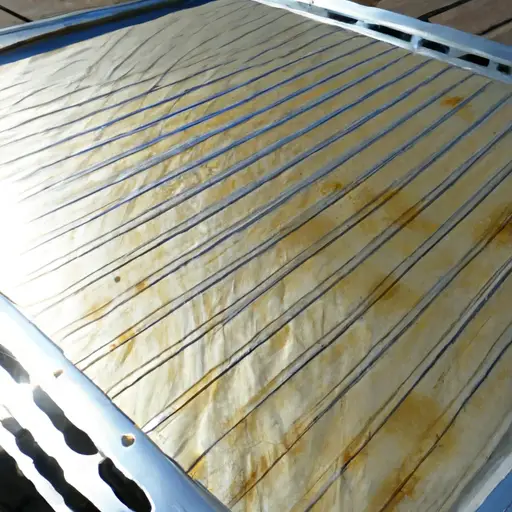Have you ever wondered how people living off the grid are able to cook their meals without using traditional kitchen appliances? Well, one answer to this is the solar oven. Yes, you heard it right – an oven that uses the power of the sun to cook food! But how does it work exactly? In this article, we will delve into the mechanism of a solar oven and understand how it harnesses the energy from the sun to prepare delicious meals.
A solar oven, also known as a solar cooker, operates on the principle of converting sunlight into heat energy. It consists of a reflective surface, usually made of glass or metal, which helps concentrate sunlight onto the cooking vessel. The reflective surface acts like a mirror, directing and focusing the sun’s rays onto the food inside the oven. This concentrated sunlight raises the temperature inside the oven and enables it to cook the food just like a conventional oven.
But how does the solar oven manage to trap this heat and maintain a constant temperature? Well, it’s all because of the greenhouse effect. The glass or transparent cover of the oven allows the sunlight to enter, but it traps the heat inside. This creates a “greenhouse” environment, where the temperature rises significantly and stays consistent throughout the cooking process. So, even if there are variations in the intensity of sunlight during the day, the solar oven can still maintain a steady heat to cook your meals.
Now that you have a basic understanding of how a solar oven works, you might be eager to learn more about its benefits, limitations, and different types. Stay tuned for the next article, where we will explore these aspects in detail and discover why solar ovens are gaining popularity among off grid enthusiasts.

Understanding the Mechanism of a Solar Oven
Introduction to Solar Ovens
Solar ovens have gained popularity in recent years as a sustainable and eco-friendly way to cook food. By harnessing the power of the sun, these innovative devices utilize solar energy to generate heat and cook meals without the need for conventional fuel sources such as gas or electricity. In this article, we will delve into the mechanism of a solar oven, exploring its components, the conversion of solar energy into heat, and the cooking mechanism it employs.
The Basic Components of a Solar Oven
A solar oven typically consists of four basic components: a solar collector, an insulation layer, a cooking chamber, and reflectors. The solar collector, usually located on the top or side of the oven, is responsible for capturing the sun’s rays and converting them into heat energy. The insulation layer is designed to prevent heat loss and maintain a high temperature inside the oven. The cooking chamber, where the food is placed, is sealed to trap the heat and ensure efficient cooking. Finally, the reflectors, strategically placed around the oven, help to maximize the amount of sunlight that enters the collector, enhancing the oven’s efficiency.
Harnessing Solar Energy
Solar energy, a free and renewable resource, is harnessed by the solar collector of the oven. The collector is typically made of a dark-colored material, such as metal or glass, which absorbs the incoming sunlight. As sunlight strikes the surface of the collector, it is absorbed and converted into heat.
Conversion of Solar Energy into Heat
The absorbed solar energy is then transferred to the insulation layer, which helps to retain the heat and prevent it from escaping. The insulation layer is often made of materials like fiberglass or foam, which have low thermal conductivity. This means that they are poor conductors of heat and can effectively trap the warmth generated by the sun’s rays.
Reflectors and Absorbers
To further optimize the solar oven’s performance, reflectors are employed to direct additional sunlight towards the collector. These reflectors are usually made of shiny materials like aluminum foil, which bounce the sunlight towards the collector, increasing its exposure to the sun’s rays. The use of reflectors helps to maximize the amount of solar energy captured, resulting in higher temperatures inside the oven.
Cooking Mechanism in Solar Ovens
Once the sunlight is converted into heat and trapped within the oven, the cooking mechanism comes into play. The high temperatures inside the cooking chamber allow for the slow and gradual cooking of food. Solar ovens are particularly effective for baking, roasting, and slow-cooking dishes. However, the cooking process may take longer compared to conventional ovens, as solar ovens rely solely on the sun’s energy, which is variable depending on weather conditions and time of day.
Temperature Regulation in Solar Ovens
Although solar ovens tend to reach high temperatures, temperature regulation can be a challenge. To address this, some solar ovens are equipped with adjustable reflectors and vents. These features allow users to control the amount of sunlight entering the oven, thus regulating the temperature inside. Additionally, the insulation layer also plays a role in maintaining a consistent temperature, as it minimizes heat loss.
Advantages of Using Solar Ovens
Using a solar oven offers various advantages. Firstly, it reduces reliance on traditional energy sources, such as gas or electricity. This not only saves money on utility bills but also helps to reduce carbon emissions and the environmental impact associated with conventional cooking methods. Solar ovens also provide a solution for those living in remote areas or off-grid locations, where access to electricity or gas may be limited. Furthermore, the slow and gentle cooking process in solar ovens helps to retain the nutrients and flavors of the food, resulting in healthier and tastier meals.
Limitations of Solar Ovens
While solar ovens have many benefits, there are also some limitations to consider. Due to their reliance on sunlight, solar ovens may not be suitable for cooking during cloudy or rainy days. Moreover, the cooking process can be slower compared to conventional ovens, so advanced planning may be required when using a solar oven. Additionally, larger or more complex dishes may be challenging to cook in a solar oven, as they may require higher temperatures or longer cooking times.
Conclusion
In conclusion, understanding the mechanism of a solar oven is key to harnessing the power of the sun to cook food. By utilizing a solar collector, insulation layer, cooking chamber, and reflectors, solar ovens are able to capture and convert solar energy into heat, providing a sustainable and efficient cooking method. While they have their limitations, the benefits of using solar ovens, including reduced reliance on traditional energy sources and healthier meals, make them a worthy addition to any eco-conscious household. So, why not give a solar oven a try and experience the wonders of sun-powered cooking for yourself?




